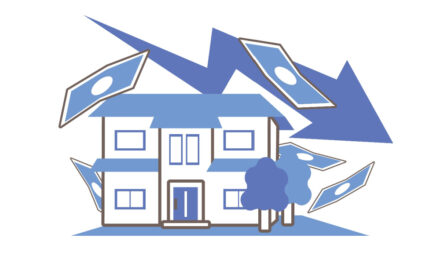“Foreclosure” is a word no homeowner ever wants to hear. It can mean losing your home and all the equity you’ve built over the years. While foreclosure might feel inevitable in some situations, it’s not always unavoidable. With the right steps, you may be able to prevent it.
What Is Foreclosure?
Foreclosure is the legal process a lender uses when a borrower fails to meet the terms of their home loan. A borrower is considered “in default” after missing several mortgage payments. At that point, the lender can take possession of the property and sell it to recover the debt. Foreclosure can also occur if the borrower violates other terms of the mortgage agreement.
Types of Foreclosure
1. Strict Foreclosure
In a strict foreclosure, the lender files a lawsuit against the borrower. The court sets a deadline for the borrower to pay the overdue amount. If the borrower fails to do so, the lender takes ownership of the property. This type of foreclosure is allowed only in a few states.
2. Power of Sale
This process is possible only if the mortgage contains a “power of sale” clause. After missed payments, the lender can sell the property at auction without going to court. This is known as a “non-judicial” foreclosure.
3. Judicial Foreclosure
In a judicial foreclosure, the lender must file a lawsuit. The borrower typically has 30 days to catch up on missed payments. If they fail, the process moves forward. Judicial foreclosure is common nationwide and is the only option in some states.
How Foreclosure Works
Most people buy homes with a mortgage loan. The borrower agrees to repay the loan under set terms—usually 15, 20, or 30 years—at a fixed or adjustable interest rate. The home itself serves as collateral, meaning the lender can sell it if the borrower defaults.
If payments stop, the foreclosure process generally follows these steps (though exact rules vary by state):
- First missed payment – The lender sends a notice reminding the borrower of the overdue amount.
- Second missed payment – A “demand letter” is sent, urging the borrower to bring payments current. The lender may still be willing to work out a repayment plan.
- Notice of default – After about 90 days without payment, the loan is transferred to the foreclosure department, and the borrower has 30 days to pay.
- Foreclosure proceedings – If payments are not made within the reinstatement period, the lender moves forward with selling the property.
Ways to Avoid Foreclosure
Homeowners facing financial hardship have several options to avoid foreclosure:
- Reinstatement – Pay all missed payments, plus any fees and interest, before the reinstatement period ends.
- Special Forbearance – The lender temporarily reduces or suspends payments due to job loss, reduced income, or medical expenses.
- Short Sale – The home is sold for less than the mortgage balance, and the lender may forgive the remaining debt.
- Deed-in-Lieu of Foreclosure – The borrower voluntarily transfers the property to the lender. In some cases, they may still owe the difference between the home’s value and the loan balance.
The Consequences of Foreclosure
Foreclosure can severely damage your credit score. For example:
- A borrower with a credit score of 700 might lose 100–160 points.
- A borrower with a score of 600 might lose 75–100 points.
In most cases, the foreclosure remains on a credit report for seven years, making it difficult to qualify for new loans or credit during that time.
Bottom line: Foreclosure is a serious financial setback, but it’s not always unavoidable. Acting quickly, communicating with your lender, and exploring available options can help protect your home and your credit.
“Foreclosure” is a word no homeowner ever wants to hear. It can mean losing your home and all the equity you’ve built over the years. While foreclosure might feel inevitable in some situations, it’s not always unavoidable. With the right steps, you may be able to prevent it.
What Is Foreclosure?
Foreclosure is the legal process a lender uses when a borrower fails to meet the terms of their home loan. A borrower is considered “in default” after missing several mortgage payments. At that point, the lender can take possession of the property and sell it to recover the debt. Foreclosure can also occur if the borrower violates other terms of the mortgage agreement.
Types of Foreclosure
1. Strict Foreclosure
In a strict foreclosure, the lender files a lawsuit against the borrower. The court sets a deadline for the borrower to pay the overdue amount. If the borrower fails to do so, the lender takes ownership of the property. This type of foreclosure is allowed only in a few states.
2. Power of Sale
This process is possible only if the mortgage contains a “power of sale” clause. After missed payments, the lender can sell the property at auction without going to court. This is known as a “non-judicial” foreclosure.
3. Judicial Foreclosure
In a judicial foreclosure, the lender must file a lawsuit. The borrower typically has 30 days to catch up on missed payments. If they fail, the process moves forward. Judicial foreclosure is common nationwide and is the only option in some states.
How Foreclosure Works
Most people buy homes with a mortgage loan. The borrower agrees to repay the loan under set terms—usually 15, 20, or 30 years—at a fixed or adjustable interest rate. The home itself serves as collateral, meaning the lender can sell it if the borrower defaults.
If payments stop, the foreclosure process generally follows these steps (though exact rules vary by state):
- First missed payment – The lender sends a notice reminding the borrower of the overdue amount.
- Second missed payment – A “demand letter” is sent, urging the borrower to bring payments current. The lender may still be willing to work out a repayment plan.
- Notice of default – After about 90 days without payment, the loan is transferred to the foreclosure department, and the borrower has 30 days to pay.
- Foreclosure proceedings – If payments are not made within the reinstatement period, the lender moves forward with selling the property.
Ways to Avoid Foreclosure
Homeowners facing financial hardship have several options to avoid foreclosure:
- Reinstatement – Pay all missed payments, plus any fees and interest, before the reinstatement period ends.
- Special Forbearance – The lender temporarily reduces or suspends payments due to job loss, reduced income, or medical expenses.
- Short Sale – The home is sold for less than the mortgage balance, and the lender may forgive the remaining debt.
- Deed-in-Lieu of Foreclosure – The borrower voluntarily transfers the property to the lender. In some cases, they may still owe the difference between the home’s value and the loan balance.
The Consequences of Foreclosure
Foreclosure can severely damage your credit score. For example:
- A borrower with a credit score of 700 might lose 100–160 points.
- A borrower with a score of 600 might lose 75–100 points.
In most cases, the foreclosure remains on a credit report for seven years, making it difficult to qualify for new loans or credit during that time.
Bottom line: Foreclosure is a serious financial setback, but it’s not always unavoidable. Acting quickly, communicating with your lender, and exploring available options can help protect your home and your credit.




